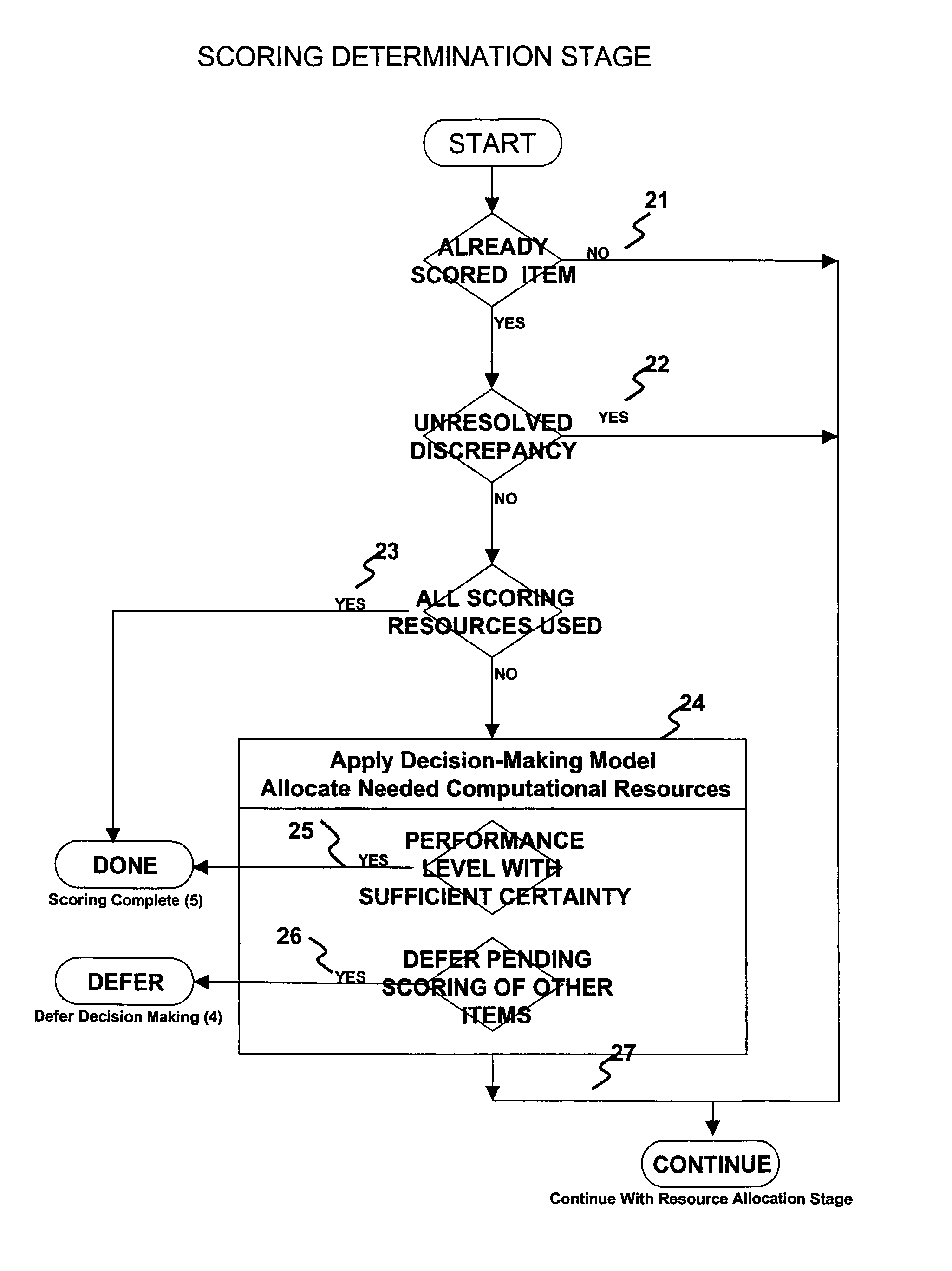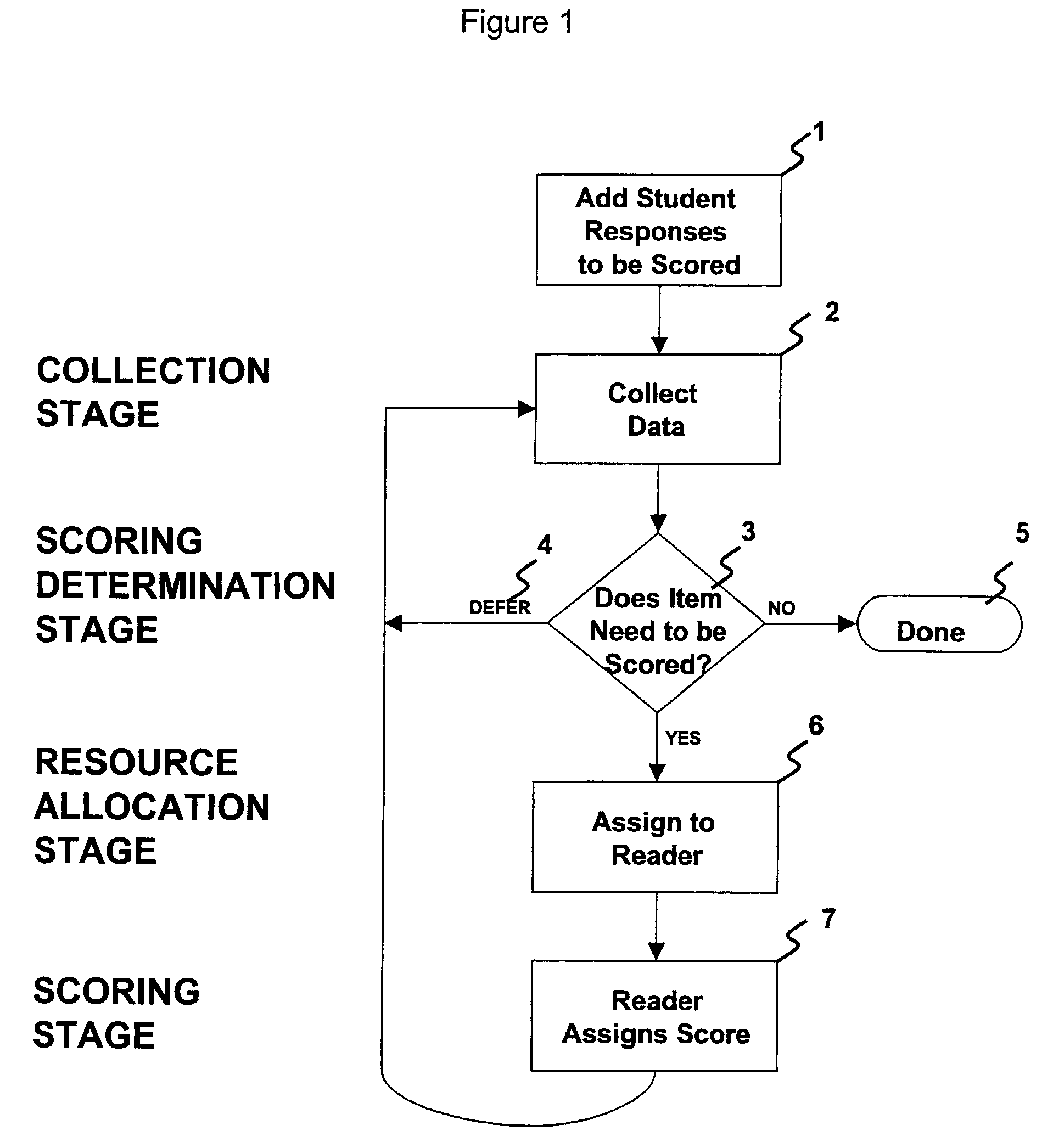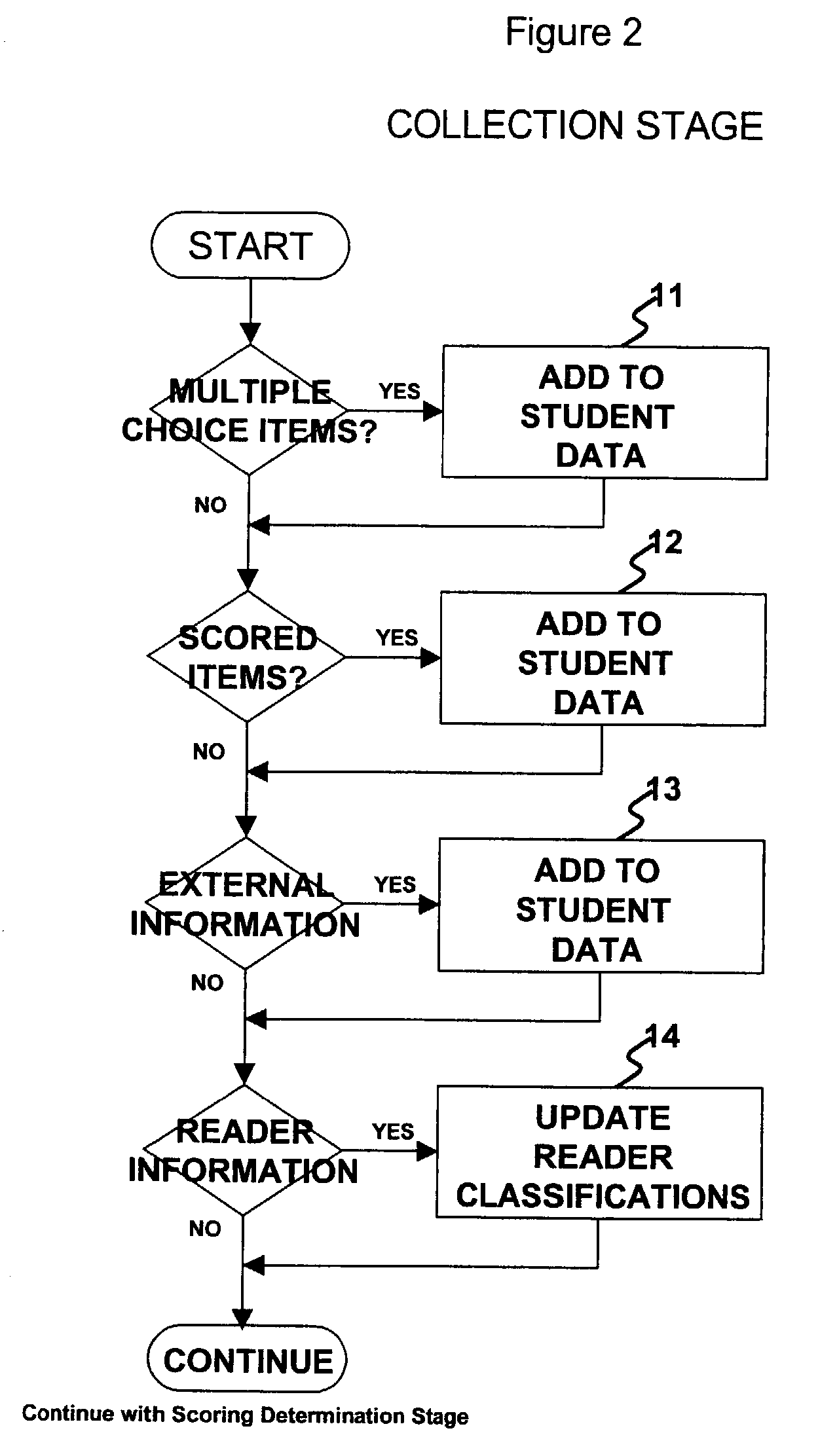Methods for improving certainty of test-taker performance determinations for assessments with open-ended items
a technology of open-ended items and performance determinations, applied in the field of academic assessment testing, can solve the problems of time-consuming and costly enterprises, and achieve the effects of improving the certainty of test-taker performance determinations, increasing the accuracy of selecting performance levels, and increasing accuracy
- Summary
- Abstract
- Description
- Claims
- Application Information
AI Technical Summary
Benefits of technology
Problems solved by technology
Method used
Image
Examples
Embodiment Construction
[0047]Prior to scoring, a set of open-ended item responses associated with a number of test-takers are collected for scoring, typically by administering an assessment (i.e., a test) to the test-takers. In the preferred embodiment of the invention, the test-taker open-ended item responses are stored in a digitized form suitable for scoring by presentation by a computer such as shown in U.S. Pat. Nos. 5,672,060, 5,987,149 and 6,256,399 (Poor) the disclosures of which are hereby incorporated by reference. The stored test-taker responses are then added to a database or other appropriate repository of items ready for scoring as represented at step (7) in FIG. 1.
[0048]As shown in FIG. 1, the scoring then progresses through a series of stages providing successively more precise scores for open-ended items until the test taker's performance level classification is determined at a specified level of certainty, or until some other stopping criteria is reached.
These stages are:
[0049]Collection...
PUM
 Login to View More
Login to View More Abstract
Description
Claims
Application Information
 Login to View More
Login to View More - R&D
- Intellectual Property
- Life Sciences
- Materials
- Tech Scout
- Unparalleled Data Quality
- Higher Quality Content
- 60% Fewer Hallucinations
Browse by: Latest US Patents, China's latest patents, Technical Efficacy Thesaurus, Application Domain, Technology Topic, Popular Technical Reports.
© 2025 PatSnap. All rights reserved.Legal|Privacy policy|Modern Slavery Act Transparency Statement|Sitemap|About US| Contact US: help@patsnap.com



